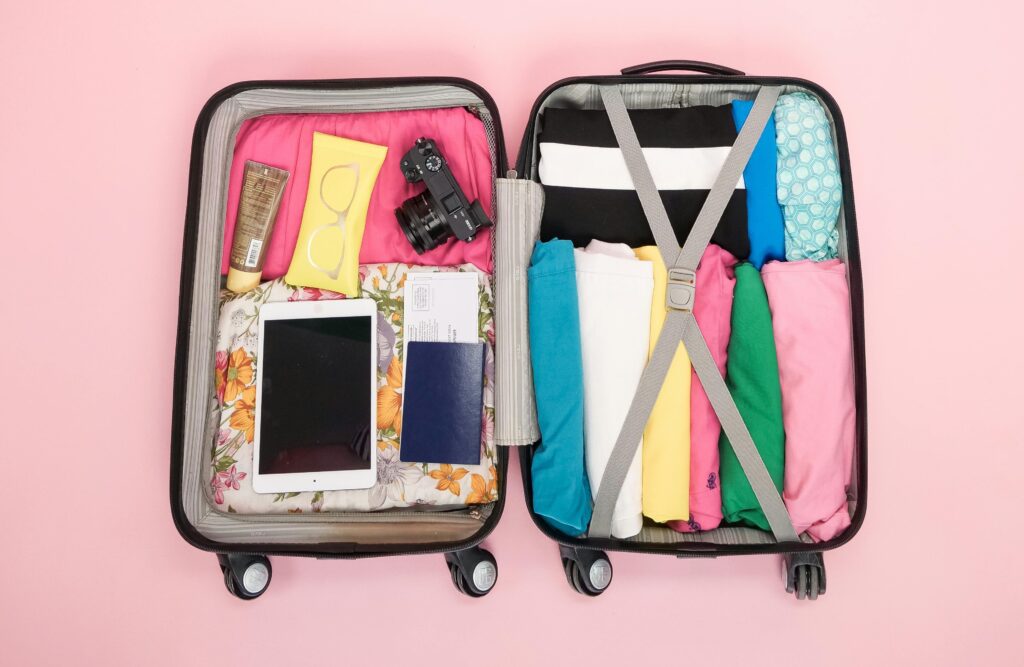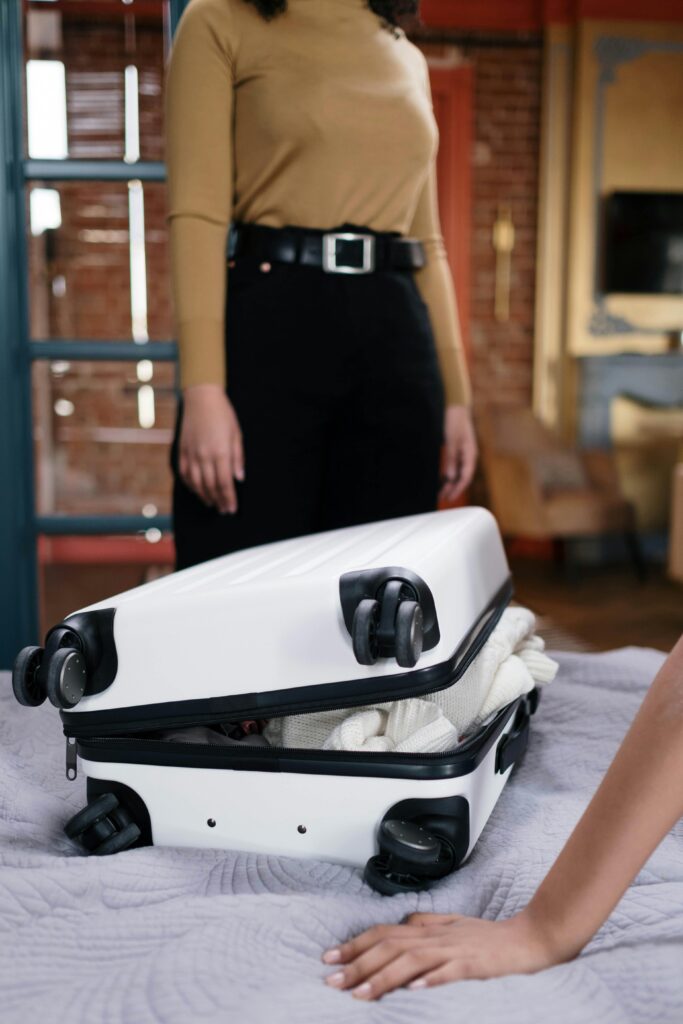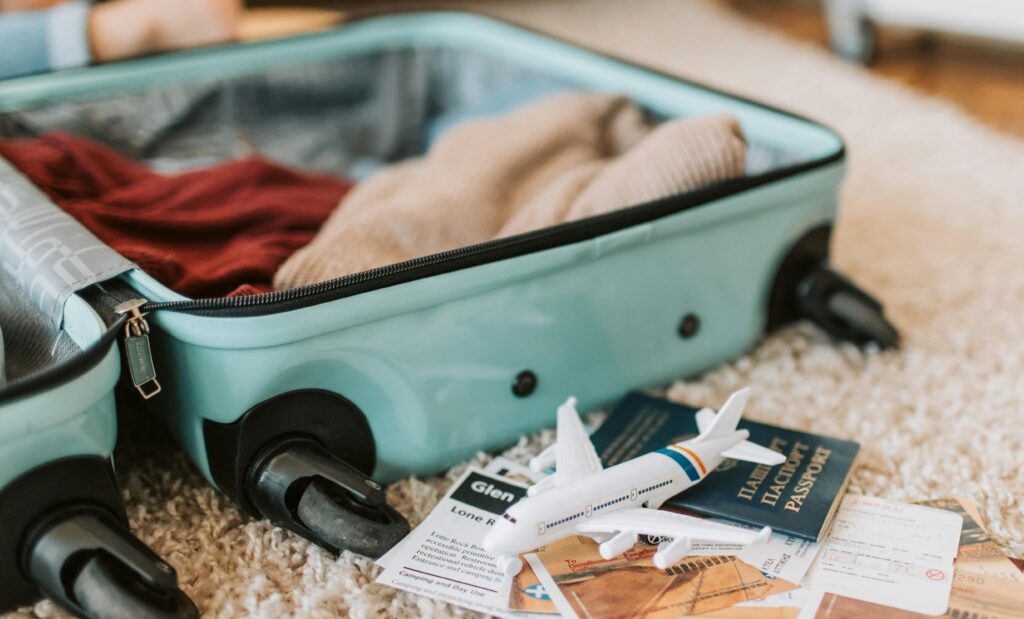Over the years, I’ve made do with whatever suitcase or backpack I had, rather than choosing the perfect suitcase for my needs. It is worthwhile and will save you a lot of frustration to think about what the perfect suitcase for you is. When travelling to Europe, for example, think about things like cobble stones (which play havoc with suitcase wheels) and whether you’ll be staying in hotels, hostels, or camping, and if you are travelling alone, with a friend or partner or in a tour group. The modes of transport you take will also be a consideration. Making the right choice can make or break a trip!
Here I will outline the features to look for to ensure durability, security, and ease of use during your adventure.
(*This article may contain affiliate links. As an Amazon Associate, I may receive a commission on purchases made.)

1. Durability: The Essential Foundation when Choosing a Suitcase
- Hard-Shell vs. Soft-Shell: Hard-shell suitcases, often made from polycarbonate or aluminum, provide excellent protection for valuables, especially when they’re jostled on flights or trains. However, they may add weight. Soft-shell options in ballistic nylon or high-density polyester are durable too, and they’re usually lighter with a bit more flexibility for packing.
- Reinforced Corners and Zippers: Opt for reinforced corners and heavy-duty zippers to withstand rough handling. Zippers are often the weakest link in a suitcase, so invest in one with sturdy, anti-burst zippers.’
- I’ve used both types. The hardshell type usually has a zip down the middle, diving the case in two. I have found this awkward on occasion when packing and unpacking. The thing I like about them is they don’t usually have zippers and external compartments as soft shell ones do, making it easier to unscrupulous characters to tamper with your luggage. The workaround here is to have a multitude of locks on the external pockets.
2. Security: Keeping Belongings Safe
- TSA-Approved Locks: With security checks, a TSA-approved lock is essential for airport convenience and overall security. Many bags now have built-in locks that streamline security checks and discourage tampering.
- Anti-Theft Features: Look for luggage with double coil zippers and secure compartments. Some high-end options offer RFID-blocking pockets that protect passports and cards from electronic theft. On the one hand, you could opt for a low-key, sleek suitcase that doesn’t draw too much attention, making it less appealing to opportunistic thieves. On the other hand, a thief might see a generic-looking suitcase as not as easily identified. I would opt for a style somewhere in between.

3. Ease of Packing and Unpacking
- Expandable Compartments: With an expandable suitcase, you can add a bit more space for souvenirs or an extra jacket. Look for compartments or a compression strap to help keep your items tightly packed and wrinkle-free.
- Thoughtful Organization: A well-organized interior makes packing and unpacking far easier, especially when staying in multiple cities. Look for models with built-in dividers, zipped compartments, and shoe pockets, which make organizing easy without additional packing cubes.
- Quick-Access Pocket: A top or front pocket can be handy for grabbing essentials like toiletries, electronics, or a change of clothes during transit without opening the entire bag. The soft-shell varieties are more likely to have these features, which make life much easier at times.
4. Size and Mobility: Choosing a Suitcase for European Terrain
- Right Size for Carry-On: If you prefer to carry your luggage, a suitcase that meets European carry-on size limits (typically smaller than U.S. limits) can help you avoid checked-baggage fees and minimize wait time.
- Spinner Wheels: Four 360-degree spinner wheels are recommended for navigating airports, narrow train aisles, and uneven surfaces with ease. Rubberized wheels can offer better traction on cobblestones.
- Lightweight Design: Many European destinations involve stairs and cobblestone paths. A lightweight suitcase is easier to carry, especially if you’re traveling between locations without elevators or porters.
- Take care with cobblestones. They can cause damage to your wheels. Carry the case over where possible, or at least tread carefully.

5. Style Meets Practicality
- Weather Resistance: Europe’s weather can be unpredictable, so a suitcase with a water-resistant exterior can help protect your belongings from sudden rain showers.
- Classic or Neutral Colors: Opt for a classic color like gray, navy, or black, which will look clean longer and is easier to spot without being too flashy. Many bags now come with unique textures or designs that make identification easy without sacrificing style.
The perfect suitcase for a European trip is one that balances durability, security, and efficient design. Prioritizing these qualities will help ensure smooth travel, whether you’re hopping between cities or strolling down cobbled streets.


